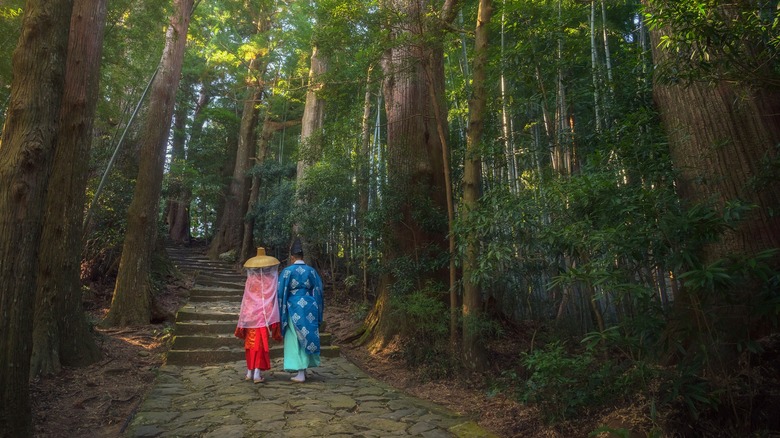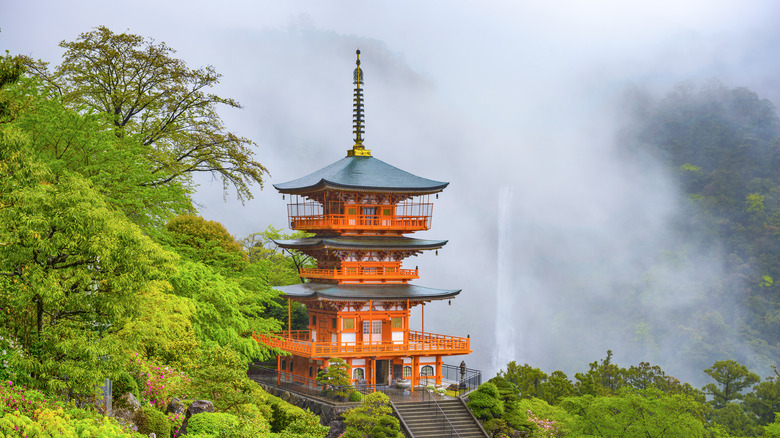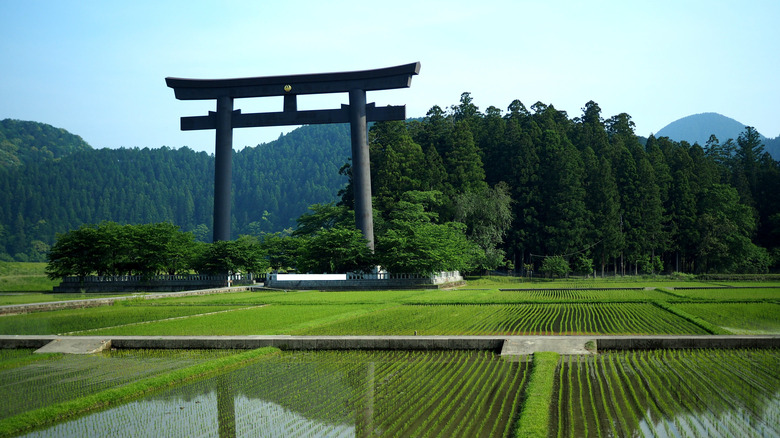Hike Along This Ancient Trail And Take In Stunning Japanese Forest Views
Nestled in the lush, verdant folds of the Kii Peninsula, the Kumano Kodo trail invites travelers to traverse a path steeped in Japanese history, spirituality, and natural splendor. It is one of the best long-distance hiking trails in the world and only one of two pilgrimage routes inscribed as a UNESCO World Heritage Site (the other being the famous Camino de Santiago de Compostela in Spain). In fact, they were twinned as sister pilgrimage routes in a symbolic act to promote devotional and cultural exchange.
The origins of the Kumano Kodo stretch back over 1,200 years. As you step onto the path, you follow the footsteps of emperors and samurai, poets and priests, who, since the Heian period (794-1185), have sought solace there. The trails were traditionally walked as an act of penance, inner rejuvenation, and a quest for blessings. The Kumano Kodo trails span 307 kilometers, with several routes varying in length and difficulty, suitable for the novice walker and the experienced hiker alike. Every year 15 million modern pilgrims from around the globe make the trek.
Embarking on the Kumano Kodo is to walk the fine line between a physical challenge and a spiritual experience. Preparation is key. It's wise to gear up with sturdy hiking boots, suitable attire, and also a mindset ready for reflection. Thankfully, walking sticks are available in buckets by most trailheads — for free. The entire Kumano Kodo pilgrimage usually takes anywhere from three to seven, or more, days, depending on the selected route: Nakahechi, Kohechi, Ohechi, Iseji, Kiiji, Choishimichi, Omine Okugakemichi, or a combination of all.
Shrines, onsens, and nature along the Kumano Kodo
Of the various trails, the Nakahechi route is the most traveled. It offers a generous view of the Kii Peninsula's diverse landscapes, passing through small villages, local tea houses, and welcoming accommodations. The onsens (natural hot springs) dotted along the route are a perfect respite after hours of hiking. The small town of Yunomine Onsen, one of Japan's oldest hot spring resorts, provides a serene setting to soothe aching muscles in waters believed to possess healing properties.
Three grand shrines — Kumano Hongu Taisha, Kumano Nachi Taisha, and Kumano Hayatama Taisha — form the spiritual core of the pilgrimage. Each sacred shrine is associated with a particular spiritual deity, historical myth, or natural element. The Kumano Kodo symbolizes the fusion between Shintoism, Japan's indigenous spirituality, and Buddhism, which was imported from China and Korea. Many pilgrims visit both the Shinto shrines and Buddhist temples. Nonetheless, the pilgrimage is open to all, regardless of religious belief or background.
Beyond the shrines, the natural environment of the Kii Peninsula is a marvel. The hiking paths traverse through forests, waterfalls, and mountains, offering a deeply immersive experience. You may notice some enchanting wildlife on your way, from giant toads to tanuki (Japanese raccoon dogs). Ancient trees, some of which are hundreds of years old, stand as silent witnesses to centuries of pilgrimage. The routes were designed to lead pilgrims through varied landscapes that were believed to be inhabited by kami, the Shinto deities or spirits.
Seasons and accommodations for the ancient pilgrimage
Each season dresses the Kumano Kodo in a different palette. The cherry blossoms of spring symbolize new beginnings, while summer cloaks the forests in lush greens but can get humid and rainy. Autumn brings pleasant weather and a fiery display of fallen leaves, a reminder of the impermanence celebrated in Japanese culture. Winter is quiet and serene, but can get cold with reduced daylight hours (making hiking difficult). Ultimately, the best months to hike are March, April, October and November.
One cannot speak of the Kumano Kodo without mentioning some culinary delights waiting along the way. The Kii Peninsula is rich in fresh seafood and local produce. Traditional dishes, often served in minshuku (family-run guesthouses) and ryokan (Japanese inns), provide a taste of the region. While planning your trip, make sure to reserve your nightly stays at these establishments in advance. Minshuku Momofuku and Yoshinoya Ryokan are highly recommended. You can also try temple lodgings (shukubo) if you reach Koyasan on your hike. For a more down-to-earth experience, camping sites are also available.
The Kumano Kodo isn't just a walk in the park — it is a spiritual and cultural pilgrimage that invites you to step outside the bounds of your everyday life. The hike becomes a vessel for internal exploration, offering an opportunity to reflect, rejuvenate, and reconnect. It is no wonder that those who walk the Kumano Kodo often speak of a more profound sense of self and purpose found along the way.


